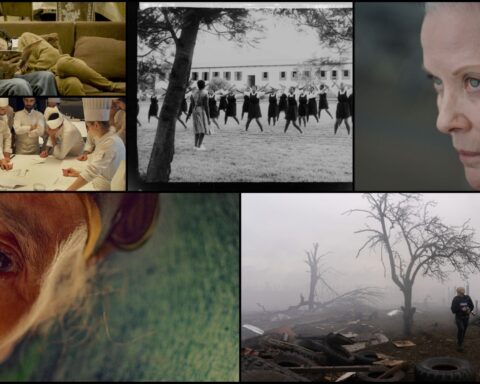Anselm
(Germany, 93 min.)
Dir. Wim Wenders
Programme: Special Screenings (World Premiere)
Is it the responsibility of art to provoke or to please? Is it a cheap stunt to use suffering as a subject, forcing viewers to stare into the abyss and recognize that life is full of real tragedies and horrors? Are the best works those that combine all of these elements, or those that find another path of expression and refuse to follow preconceptions of what representation means in the first place?
Over the decades, the artworks by German-born Anselm Kiefer have both provoked and pleased people. He unabashedly made the history of his fatherland his subject, using paint, organic materials, and even fire to delve into deep myths and sordid historical events. For some people, this tactic aggrandizes the same stories that fuelled Nazi propaganda, while for Kiefer, it’s a recovery effort of sorts. It decontextualizes what came before while fully showcasing the horror that these visions wrought during the twentieth century.
Fellow countryman Wim Wenders is uniquely situated to tell Kiefer’s story, using his own creatively rich and formalistically bold cinematic flourishes to bring Anselm to the big screen. Shot stereoscopically to best capture both the textures and sheer scale of many of these artworks, like his 3D dance documentary Pina before, Wenders treats audiences to an extraordinary experiential journey using the tools of filmmaking to illuminate another artistic idiom.
The scale of Kiefer’s objects of art are only dwarfed by the titanic scope of both his vision and, seemingly, his bank account. We visit what’s less an atelier and more a compound, a vast workshop that could easily be confused for a large-scale factory but instead provides the assorted raw materials, source illustrations to be used for inspiration or integration, and multi-storey ceilings to house the canvases that seem almost impossible to manipulate.
The sheer scale of everything lets the 3D truly come to the fore, providing the illusion of visiting these spaces in a far superior way compared to a simple two-dimensional shot. While Pina is the obvious progenitor, Werner Herzog’s Cave of Forgotten Dreams also provides a touchstone case for how experiencing artistic spaces through 3D cinema approximates the experience of being there oneself with the added benefit of creative use of montage, score, lighting, etc. The sense of being there, but having a better experience than actually being there, bubbles away at the heart of Wenders’ latest film.
Anselm serves not only as a showcase for artworks created over the decades, it’s also a primer of the man’s life and career. The biographical details are themselves woven in like the organic materials placed on the canvas. Archival interviews and newly-shot interviews mix with close-ups the show the artist’s technique or provide sweeping examinations of his various works. The film proves both overwhelming and intoxicating, a journey that provides a truly unique, privileged eye not only into what Kiefer and his assistants construct, but also into the very notion of artistic expression itself.
This is a beautiful art film about art, but it also gives space to the argument that the provocation truly is part of the journey. Kiefer integrates poetry and shocking Nazi poses in a refusal to erase the past. Rather than glorifying it through repetition, he manages to subvert its original meanings and place them within a more critical mode. Of course, it’s up to the viewer whether this approach is successful or not, but Wenders’ film provides a detailed view of the philosophical and rhetorical canvas on which Kiefer’s argumentative art has been assembled over the years.
Like Kiefer’s art, the film is both unsettling and deeply beautiful, a paradoxical combination that generates contradictory emotions. But feelings it does generate! This is the magic of both Kiefer and Wenders, and by immersing oneself into both process and product, showcase and cinematic splendour, we’re treated to a film that itself seems to be as integral to the deeper understanding of Kiefer as the artworks themselves.
Anselm is a triumphant, brash work that opens up not only the artist’s work to an entirely new audience (this writer included), but does so in a way that’s entertaining, accessible, and moving. It manages a provocative and profound alchemical trick, like how adding materials to a blank slate can literally transform one’s understandings of beauty and history. It takes a mighty movie to house such bold ideas, and luckily Wenders’ latest happens also to be one of his best.














